Big sails with control lines
The picture you see here shows one side of the "A" frame sails. The view is from the side. The three black bars that cut across the stern control lines allow these lines to be locked in any position.
Here are the steps to take to set the sails.
1. Raise the boom as high as conditions permit. The higher the boom the faster the ship. Each of the small stunt kites gets a little flatter as the boom is raised.
2. Adjust the control lines for each row to take the slack out of the whole sail.
One of the advantages of these small stunt kites is that durning a tact they do not have any delay time. On modern sails the boom delay time, while it swings from one side of the boat to the other and sets, can be as much as 12 seconds. This means that the Viking Navy ship can do many more tacts without this delay penalty.
When sailing across the wind the "A" frame design has the positive effect of creating a wind shadow thus cutting the amount of sail area. Trust me you want this wind shadow. When I fly my stunt kite right across the wind the force on my arms feels like it is about to pull them out of their sockets. This translate into a lot of heeling force. More than needed. Of course the stunt kite also goes very fast across the wind.
The condition where the Viking Navy design is at its best is straight into the wind with the swells coming straight at you. Here the ship tacks to the side along the back of each retreating swell. The oars as outriggers come into play here. Lowering water drag by putting most of the weight of the ship onto the planing surface of the oar paddles. Then at the bottom between swell, the skipper tacks straight into the wind. Lets the momentum carry the ship up and over the next swell. Still straight into the wind. Now we skip. We are heading straight into the wind, we are coming up over the swell into the full force of the wind and the oar sails catch lifting air under them. The "A" frame sails also catch lifting air at this point. The whole ship becomes airborne for a second. Water drag drop to zero, thus releasing a surge of acceleration right into the wind. Now we are back to where we started. We can tact right or left along the back of the retreating swell.
When sailing straight downwind the ship will need to tack back and forth to catch any wind. This also allows the ship to sail downwind faster than the wind. See some feedback below the picture.
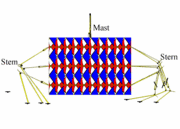
From: keth( (at) )telepost.no Hi Peter! I looked at your http. Nice drawing! Sorry, but I am not familiar with the stunt kite. Maybe I should try one out? ...Pete... A stunk kite is great fun. It can move across the sky very fast. I gather there are holes on it? ...Pete... Not when it is a lone stunt kite. But yes when I use it as a Viking sail. Some kind of structure? ...Pete... Yes to hold the shape. Fiberglass rods when used as a stunt kite, the reinforcing rope when it is used as a Viking sail. What is the blue area in your drawing? ...Pete... One set of stunt kites. And how about the white and the red? ...Pete... The white is the sky. The red is the second set of stunt kites. Since the stunt kite sets overlap each other I made them of different colors so the overlap would be easy to see. With best regards, Keth
Specification for Viking Navy sail shown
Length of diagonal. This length needs to be equal to the distance between the oars on the boat, 44 inches for the Oseberg.
Length from top to bottom may be adjusted to a few inches greater than the diagonal if need be to suit the height of the mast. Some of the rune stones show this length to be 20% greater than the diagonal.
detail
Key
A Hand-worked grommets approx. 5/8 in (16 mm) i .d .
B Leading edge of 1 1/2 in (38 mm) polyester webbing stitched to both sides of sail
C Trailing edge of 3/4 in (19 mm) polyester webbing stitched to both sides of sail
D Rope inside leading edge webbing 1/2 inch (12 mm) polyester
1. Material: 5 1/2 OZ. polyester, red and blue, make half of the sails out of red and half out of blue to give the checkerboard look.
2. Sail to be cut absolutely flat with the diagonal of the sailcloth being aligned with the diagonal of the sail.
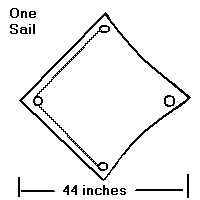
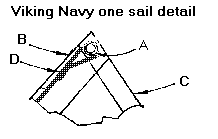
Four views of a sail diamond.
Each sail diamond can be thought of as a modern day stunt kite. The nose of the kites always points toward the front of the ship. The tail of the kite always points toward the back of the ship. The cut of the kite is such that the fabric of the nose is greater than 90 degrees. The kites are put together into perfect square diamonds thus the fullness of the nose makes each kite billow just like a normal stunt kite. Because of the a-frame design of the sails, that is, the top of the sails are attached at the center of the ship at the top of the mast while the bottom of the sails are attached far from the center of the ship out on the oars thus the sails generate lift at all times. When the ship is just coming over the front of a swell even more lift is generated because of the angle of attack into the wind. I picture a continuous spine running horizontally through each row of 8 kites of the same color. Then the wingtips of each diamond would attach to the adjacent spines.
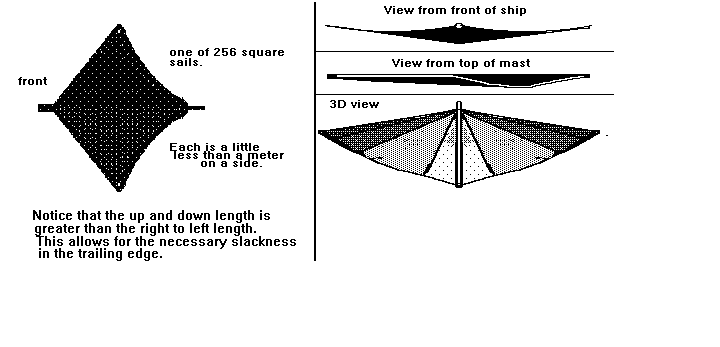
Viking Diamond Sail Red White and Blue
Diamond Sail

Note how the corners of the sail are tied to chair legs to allow gravity to simulate the shape the sail would have under the pressure of the wind.
Viking Diamond sail Red White and Blue
This sail is made of rip-stop nylon. The blue border along the leading edge is twill tape an inch and a half wide folded in half to protect this edge. The seam between the red and white is a flat felt seam. The seam along the trailing edge is a double hem. There is a additional twill tape from the front point to the back point. The six points where the twill tape end are finished with a one inch loop that has a half twist in it.
Oar sails
For best skipping conditions the skipper needs to time his tack into the wind just at the top of the swell. That position allows the oar sails to provide maximum lift. With the boat going at ten knots then tacking into a 20 knot wind right at the top of the swell, giving a ten degree angle of attack, the oar sails will skip the ship for two seconds.
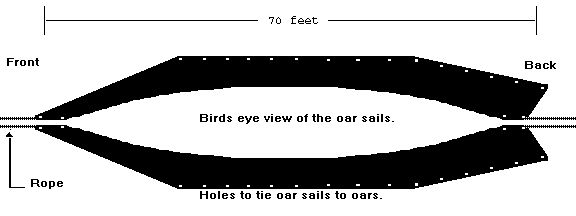
Skipping a Viking ship
Note that around 30 knots the lift is more than 100% of the Viking ships total weight.
speed of boat in knots 10 20 30 40 Wind lift in percent of boat weight 20 40 80 160 Skip distance in percent of boat length 5 10 50 200
At the point of this calculation the boat is moving thru the eye of the wind on a tack. Thus the point of sail is right into the wind. This is the exact point where the boat will skip if the lift is high enough. And the tack is timed to match the high point of a swell.
Note that even when the wind caused lift is less than 100%, the boat will experience a forward surge of speed when water caused drag is replaced by the much lower drag caused by wind lift.
Here is an example calculation for skipping an Oseberg sized ship at 40 knots:
A-frame sails: surface area =
lift =
drag =
Oar sails and boat cover: surface area =
lift =
drag =
percent drag reduced because of ground effect =
Specification for Viking Navy Watch
Length of watch that I built was 14 1/2 inches long.
Length from top to pivot hole I set at one inch.
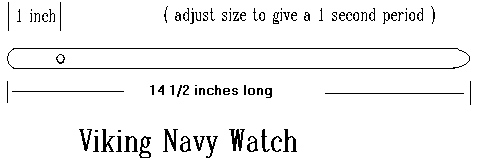
The only thing hard about making this watch is adjusting it to exactly one second. I ended up writing a computer program to help me time the period of the watch. Then I drilled a small hole in the bottom and screwed in a small long screw so I could make very small adjustments.
Once your watch is made, you need to dream up a way to attach it to your belt. I made a sash for mine. Works well and looks fine.
Note that in my left hand I have three strings of beads. One to count seconds. One to count minutes. One to count hours.

Nutshell Ribs
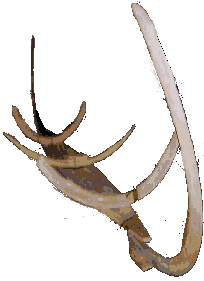
Viking Sun Compass
The picture you see here shows a design of a Viking sun compass. Each dial is set once a day to reflect the day of the year and the current latitude.
Each dial is about the size of a hockey puck. But is wedge shaped. The markings on each dial reflect either the day of the year or the latitude.
To use this compass, you hold the compass upright such that the shadow of the sun lands right on the sun shadow notch cut into the face. The low part of the face now points north.

Shield designed to find longitude
This shield is very special. I designed it to be able to find longitude.shield
Another Portage Idea
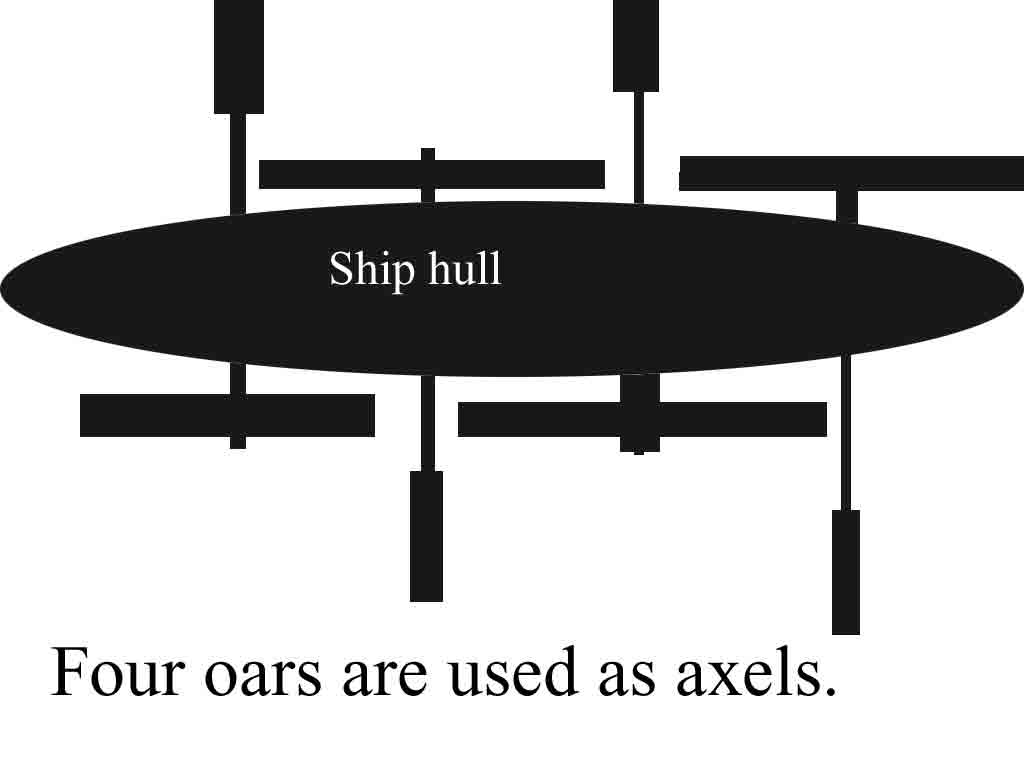
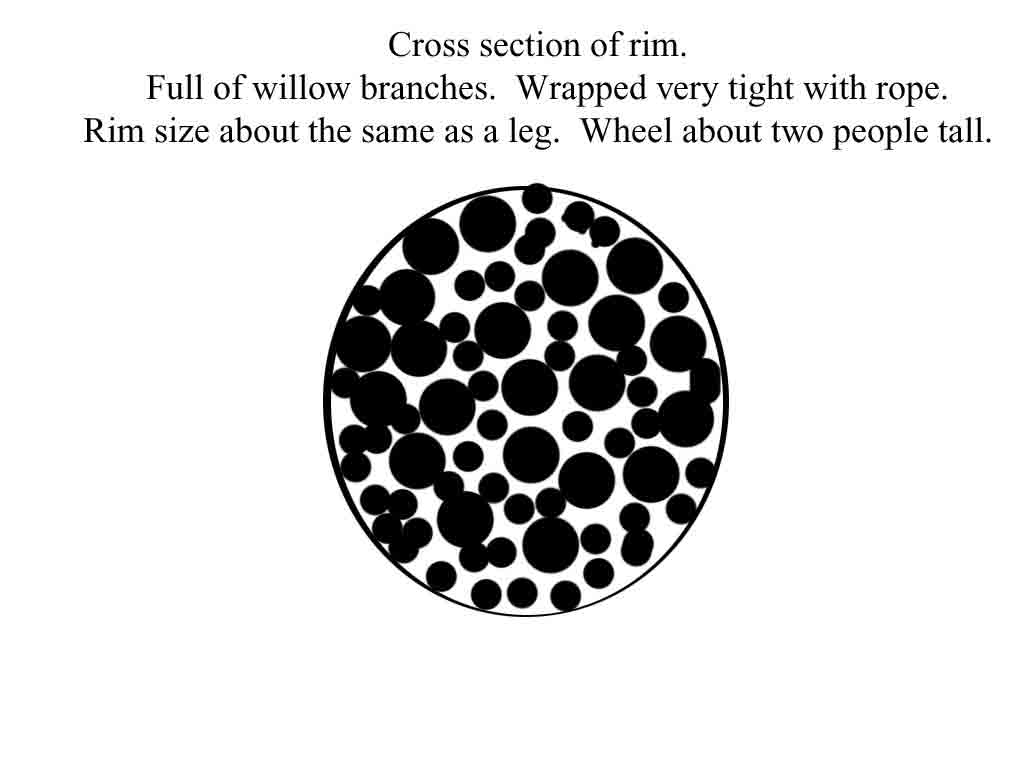
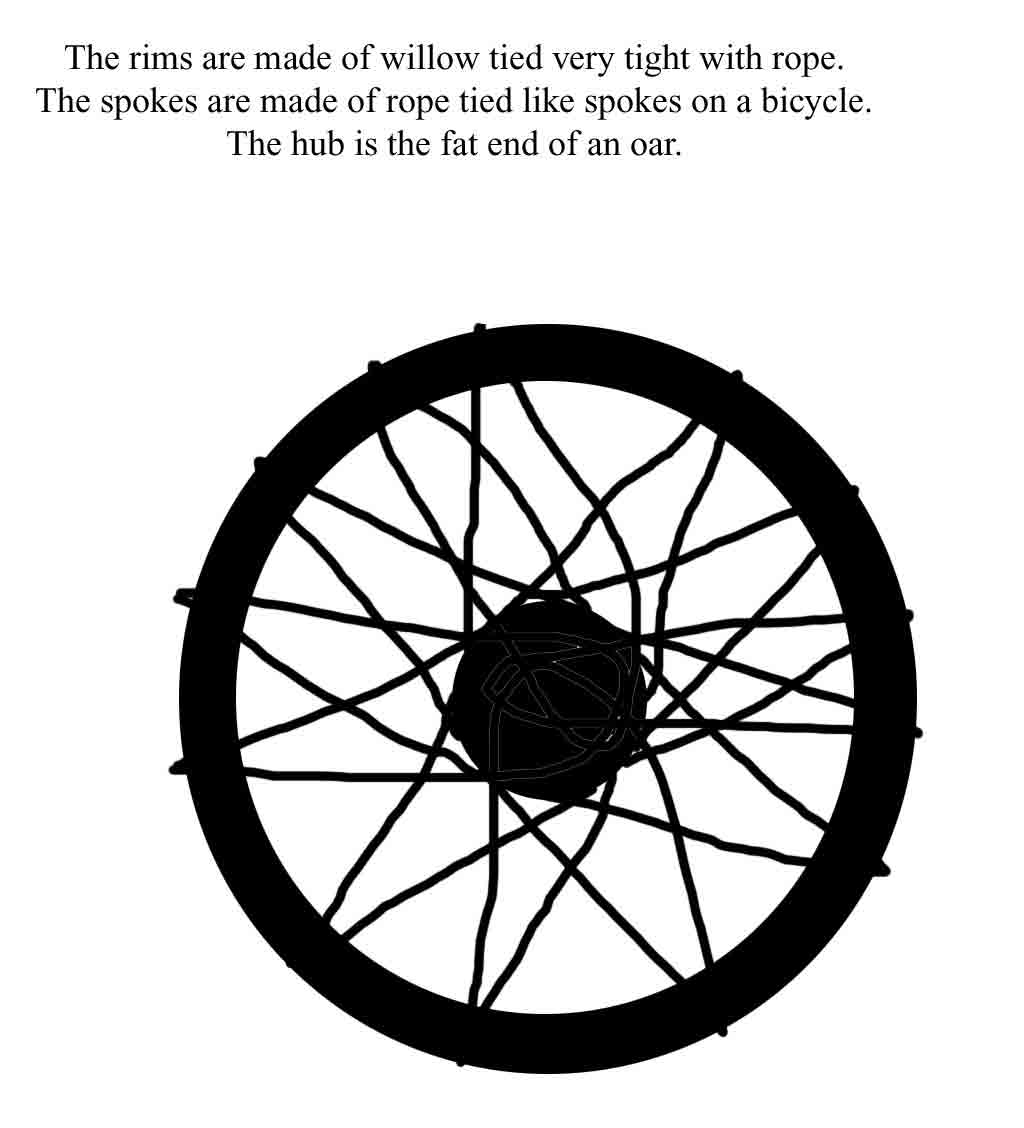
Viking Portage idea by Pete in 1998
There are three levels of logs.
The first level goes across the road.
The second level goes along the road direction.
The third level goes across the road and rolls along with the boat.
All the levels can be taken up and moved with the boat as it goes.

one sail tile





